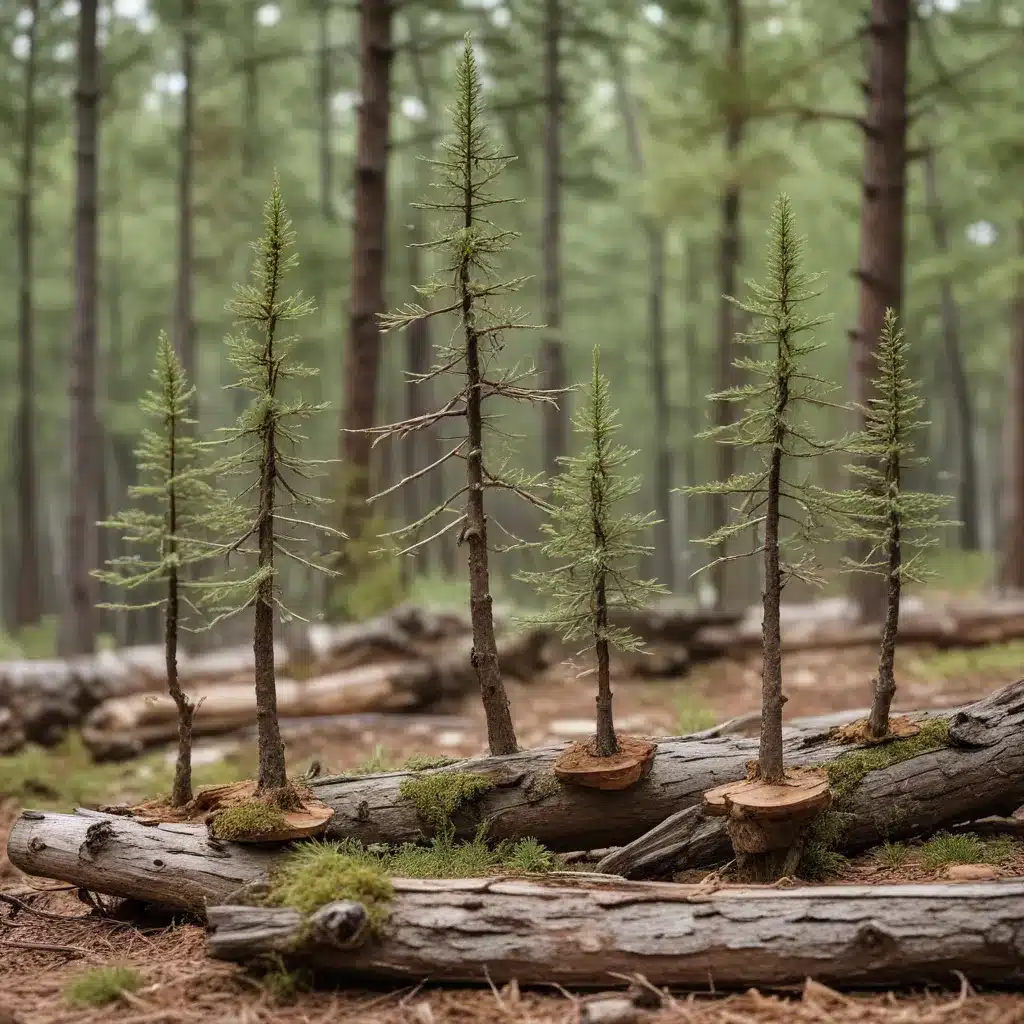
Nestled within the rolling hills of Crooked Pines Farm lies a unique natural treasure – the crooked pine. These gnarled, twisting conifers have captured the imagination of generations, inspiring artisans and nature lovers alike to incorporate their distinctive forms into stunning, one-of-a-kind creations.
Identifying Crooked Pines
The crooked pine, scientifically known as Pinus contorta, is a hardy evergreen species native to the region. What sets these trees apart is their remarkable ability to adapt to challenging environments, producing dramatic, contorted trunks and branches as they reach for the sky. Unlike their straight-growing counterparts, crooked pines develop this unique silhouette in response to harsh winds, droughts, and poor soil conditions common in the Crooked Pines Farm ecosystem.
With their gnarled, twisted appearance, crooked pines are easily recognizable, even from a distance. Their needles grow in dense, bundled clusters, typically a deep, rich green that provides a striking visual contrast against the contorted, reddish-brown bark. As the trees mature, their trunks and limbs can twist themselves into intricate, sculptural shapes, further enhancing their captivating, almost otherworldly aesthetic.
These remarkable trees thrive in the well-drained, sandy soils and sunny exposures found throughout the farm, their resilience allowing them to flourish even in the most challenging micro-environments. Crooked pines can be found dotting the landscape, their unique silhouettes adding visual interest and character to the natural surroundings.
Sustainable Harvesting Practices
Responsible stewardship of the crooked pines is a top priority at Crooked Pines Farm. We recognize the value of these natural resources, not only for their aesthetic appeal but also for the vital role they play in the local ecosystem. As such, we have implemented a comprehensive sustainable harvesting program to ensure the long-term health and vitality of the crooked pine population.
When foraging for materials to use in our crafting projects, our team carefully selects fallen or pruned branches, taking care to leave the living trees undisturbed. We also work closely with our forestry partners to identify areas where strategic thinning or selective removal of damaged or diseased specimens can be carried out to promote the overall vigor of the pine stands.
Through these thoughtful practices, we strive to minimize our impact on the natural environment while still providing a steady supply of the unique, twisted forms that are so essential to our creative process. By honoring the intrinsic value of the crooked pines, we hope to inspire a deeper appreciation for these remarkable trees and the fragile ecosystems they call home.
Unique Design Inspirations
The crooked pine’s captivating silhouette has long been a source of inspiration for the artisans and craftspeople of Crooked Pines Farm. Rather than fighting against the natural imperfections of these trees, we embrace the inherent beauty of their twisted, organic forms, incorporating them into a wide range of unique and visually striking designs.
Our furniture makers, for example, often select crooked pine branches and trunks to create one-of-a-kind pieces that blend the rustic and the refined. A crooked pine console table might feature a sinuous, twisting base that seamlessly transitions into a smooth, minimalist top, while a set of dining chairs might incorporate these sculptural elements into the chair backs and legs.
In our textile and jewelry workshops, we transform crooked pine needles, resin, and other natural materials into wearable accessories that honor the farm’s abundant resources. Delicate earrings, intricate necklaces, and bold, statement-making brooches all bear the hallmark of the crooked pine’s distinctive character.
Even our team of sculptors and fine artists finds inspiration in the organic forms of the crooked pine, using them as the starting point for a range of three-dimensional artworks. From abstract wall hangings to whimsical, free-standing sculptures, these pieces celebrate the natural world’s innate beauty and the unparalleled creative potential of the crooked pine.
Versatility of Crooked Pine Crafts
The versatility of the crooked pine is truly astounding, as its unique features lend themselves to an incredibly diverse array of applications within the world of crafting and design. Whether you’re drawn to the rustic charm of natural wood or the sculptural elegance of its twisted forms, there’s no shortage of ways to incorporate this remarkable tree into your own creative projects.
For those with a passion for furniture and home decor, crooked pine branches and trunks can be transformed into stunning centerpieces, like coffee tables, shelving units, and accent pieces. The organic, asymmetrical shapes of these materials pair beautifully with clean-lined, modern silhouettes, creating a striking visual balance that elevates any living space.
If wearable accessories are more your style, crooked pine needles, resin, and other foraged materials can be expertly woven, cast, or sculpted into one-of-a-kind jewelry, hair accessories, and textiles. The natural variations in color and texture within each piece lend an artisanal, handcrafted quality that is sure to turn heads.
For the fine artists and sculptors among us, the crooked pine’s dramatic, twisting forms provide endless inspiration for large-scale, three-dimensional works. Whether you’re carving intricate, abstract wall hangings or crafting whimsical, free-standing sculptures, the crooked pine’s distinctive character can serve as the perfect foundation for your next masterpiece.
No matter your creative medium or personal aesthetic, the natural abundance of Crooked Pines Farm offers a wealth of opportunities to explore the unique beauty and endless possibilities of the crooked pine. By embracing the organic imperfections of these remarkable trees, we can cultivate a deeper connection to the natural world and bring a touch of rustic elegance to every aspect of our lives.


